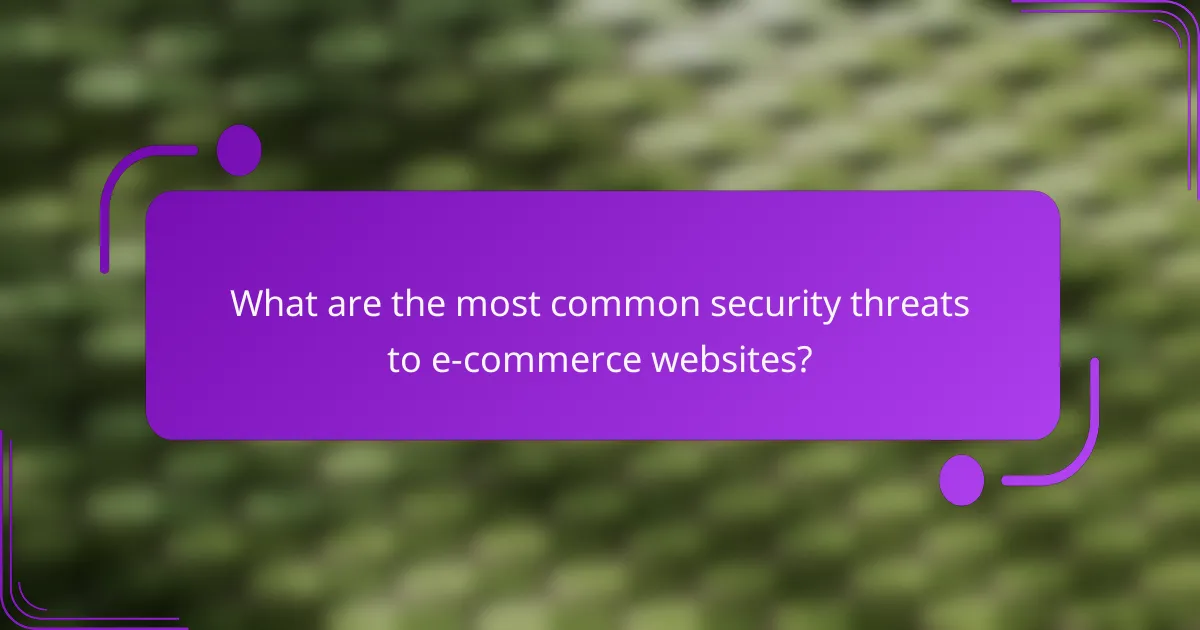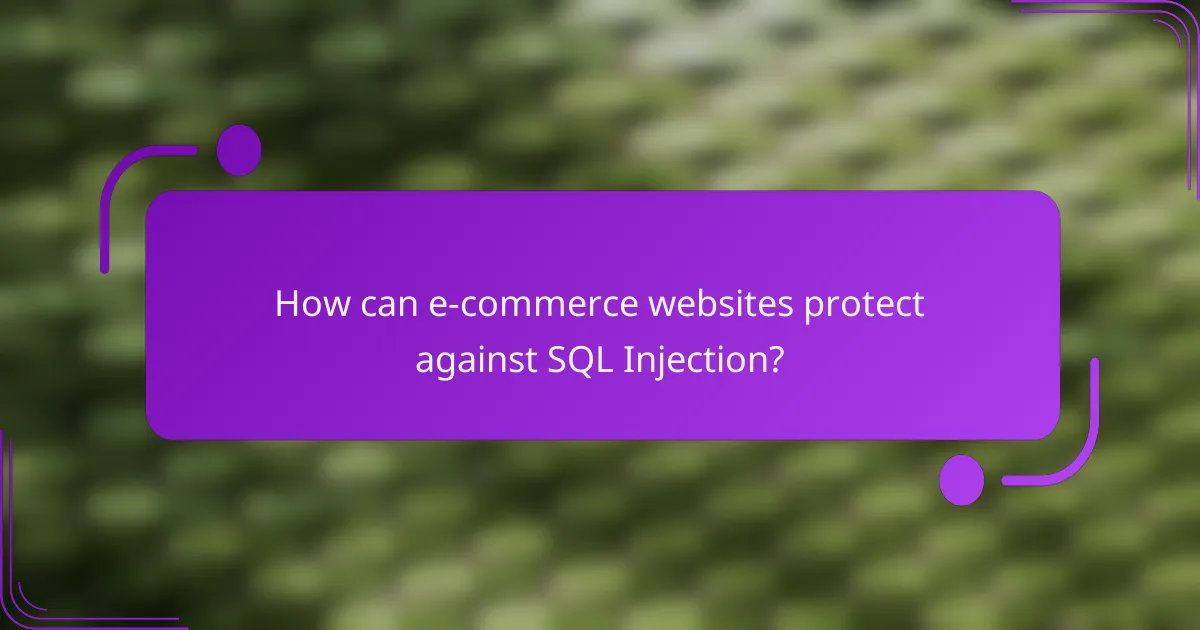E-commerce websites are increasingly targeted by various security threats that can jeopardize sensitive customer information and disrupt business operations. By recognizing these threats, such as SQL Injection and Cross-Site Scripting (XSS), businesses can adopt effective security measures to safeguard their platforms and maintain customer trust.

What are the most common security threats to e-commerce websites?
E-commerce websites face several significant security threats that can compromise customer data and disrupt operations. Understanding these threats is crucial for implementing effective security measures to protect both the business and its customers.
SQL Injection
SQL Injection is a type of attack where malicious SQL code is inserted into a query, allowing attackers to manipulate the database. This can lead to unauthorized access to sensitive information, such as customer data and payment details.
To mitigate SQL Injection risks, use prepared statements and parameterized queries. Regularly update and patch database management systems to close vulnerabilities.
Cross-Site Scripting (XSS)
Cross-Site Scripting (XSS) involves injecting malicious scripts into web pages viewed by users. This can lead to session hijacking, defacement of websites, or redirecting users to malicious sites.
Prevent XSS by validating and sanitizing user inputs, employing Content Security Policy (CSP), and escaping output data. Regular security audits can help identify potential XSS vulnerabilities.
Distributed Denial of Service (DDoS)
A Distributed Denial of Service (DDoS) attack overwhelms a website with traffic, rendering it inaccessible to legitimate users. This can result in significant downtime and loss of revenue for e-commerce businesses.
To defend against DDoS attacks, consider using a content delivery network (CDN) and implementing rate limiting. Regularly monitor traffic patterns to detect unusual spikes that may indicate an attack.
Data Breaches
Data breaches occur when unauthorized individuals gain access to sensitive customer information, such as credit card numbers and personal details. These breaches can lead to financial loss and damage to a company’s reputation.
To reduce the risk of data breaches, encrypt sensitive data both in transit and at rest. Comply with regulations such as GDPR or PCI DSS to ensure proper data handling practices.
Malware Attacks
Malware attacks involve malicious software designed to disrupt, damage, or gain unauthorized access to computer systems. E-commerce websites can be targeted to steal customer information or install ransomware.
Protect against malware by implementing robust antivirus solutions and keeping all software up to date. Regularly back up data and educate employees about recognizing phishing attempts and suspicious links.

How can e-commerce websites protect against SQL Injection?
E-commerce websites can protect against SQL Injection by implementing robust security measures that validate user inputs and utilize safe coding practices. These strategies help prevent attackers from manipulating database queries through malicious input.
Input Validation Techniques
Input validation techniques involve checking user inputs for accuracy and safety before processing them. This can include ensuring that inputs conform to expected formats, such as using regex to validate email addresses or restricting input lengths. By rejecting any input that does not meet these criteria, websites can significantly reduce the risk of SQL Injection attacks.
Common methods for input validation include whitelisting acceptable characters and using built-in validation functions provided by programming languages. For instance, only allowing alphanumeric characters in user IDs can help block harmful input. Regularly updating validation rules to reflect new threats is also crucial.
Parameterized Queries
Parameterized queries, also known as prepared statements, are a powerful defense against SQL Injection. They separate SQL code from user input, ensuring that any data entered by users is treated as a value rather than executable code. This approach effectively neutralizes malicious input.
To implement parameterized queries, developers should use database libraries that support this feature, such as PDO in PHP or PreparedStatement in Java. For example, instead of concatenating user input directly into SQL statements, developers can define placeholders and bind user inputs to these placeholders. This practice not only enhances security but also improves code readability and maintainability.

What measures can be taken to prevent Cross-Site Scripting (XSS)?
To prevent Cross-Site Scripting (XSS), e-commerce websites can implement several effective measures that enhance security. These strategies focus on controlling content and validating user input to mitigate the risk of malicious scripts being executed in a user’s browser.
Content Security Policy (CSP)
A Content Security Policy (CSP) is a powerful security feature that helps prevent XSS by specifying which content sources are trusted. By defining a CSP, website owners can restrict the execution of scripts to only those that are explicitly allowed, reducing the chances of unauthorized code running.
Implementing a CSP involves adding a header to your web server configuration. For example, a basic CSP might look like this: Content-Security-Policy: default-src 'self'; script-src 'self' https://trusted.cdn.com;. This setup allows scripts only from the same origin and a specified trusted CDN.
Input Sanitization
Input sanitization is crucial for preventing XSS attacks by ensuring that any data submitted by users is clean and safe. This process involves validating and filtering user input to remove potentially harmful characters or scripts before processing or storing the data.
Common techniques for input sanitization include using libraries that automatically escape special characters, such as HTML entities. For instance, transforming `
